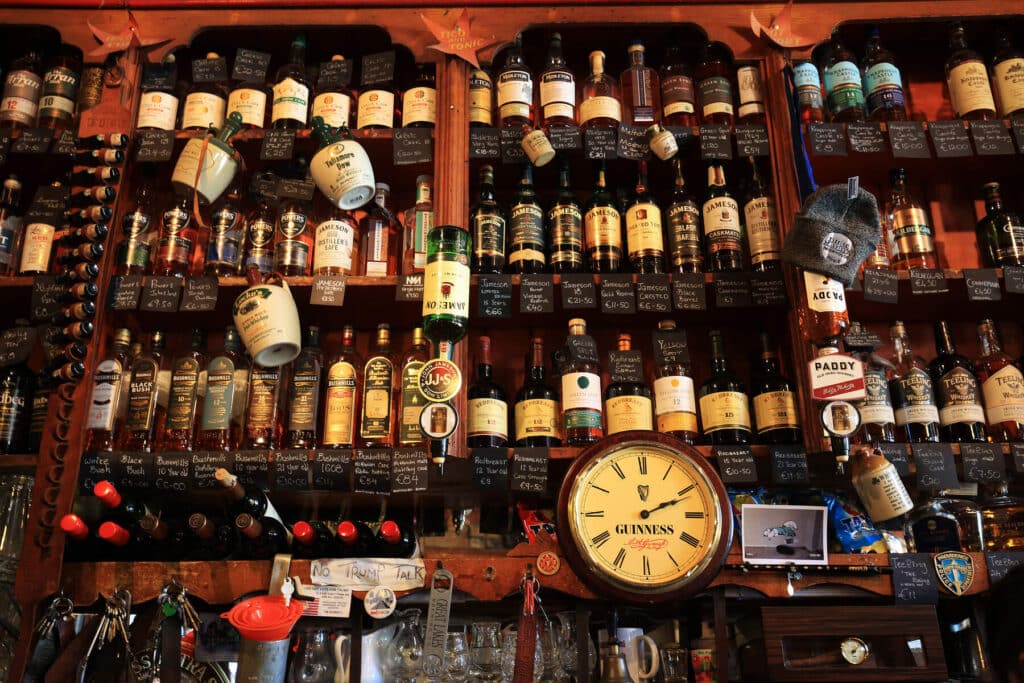Dublin’s evolution as a city means the end of traditional Irish culture in the capital; let’s discuss why the west is calling more than ever.

Dublin may be a city that attracts millions – yes, millions – of visitors each year, but is the capital losing its traditional charm and advancing towards a more cosmopolitan European city?
Dublin once lured visitors to its cobbled streets and bustling bars with the promise of a taste of Irish culture and traditional experiences. But this may become a thing of the past now that it seems tourists are more eager to see the ‘real’ Ireland.
When comparing the west of Ireland and Dublin, it is becoming more apparent that the west aligns with the tourist vision of Ireland. With the rustic landscapes, authentic Irish pubs, and old-school charm, visitors may be more likely to spend more time in the west than in the capital.
So, let’s discuss why traditional Irish culture in Dublin is over.
- Dublin’s evolution as a city means the end of traditional Irish culture in the capital; let’s discuss why the west is calling more than ever.
- Globalisation and urbanisation – Dublin as a modern European capital
- How does Dublin compare to the rest of Ireland? – cultural differences
- West is best – the country’s cultural heart
Globalisation and urbanisation – Dublin as a modern European capital

First things first, Dublin is a European capital city, and there are some unavoidable things that come with that status. Globalisation and urbanisation are two such things that have undoubtedly taken hold in Dublin over the years.
Thanks to this economic development and urbanisation, world-famous businesses like Facebook, PayPal, and Google have opened headquarters in the capital, providing jobs for many Irish people and putting Dublin on the map as a global place to be.
This could be both a blessing and a curse as something has got to give – which could well be the end of traditional Irish culture in the capital.
While there are still plenty of elements of Irish culture in Dublin, such as traditional Irish pubs, heritage sites, and historic quarters, the truth is that Dublin is flourishing as a European city. With this growth, traditional Irish culture is slowly being left behind.
So, while Dublin boasts world-famous attractions, sought-after shopping opportunities, and top-notch bars and restaurants (some of the best in the world, might we add), the city focuses less on time-honoured traditions.
This perhaps makes it less appealing to visitors – or at least cultural enthusiasts.
How does Dublin compare to the rest of Ireland? – cultural differences

Dubliners will say that Dublin is one of the best cities in Europe, and while the city has plenty to brag about, it is clear that visitors to the country are in search of something more.
Dublin has long been a fantastic destination for nightlife, weekend escapes, and short breaks. Yet, if we have to be honest, the authentic culture lies elsewhere – specifically in the heart of the west of Ireland.
Yes, Ireland may be a small country, but it might come as a surprise to many that there are plenty of differences between the various areas, with the most apparent differences appearing between the capital and the west of Ireland.
While Dublin has become the metropolis we know today, the west has always been a region where time has stood still. It is now becoming more apparent that this is what appeals to both national and international visitors.
West is best – the country’s cultural heart

As Dublin continues to shape its identity to compete with popular European cities like London, Paris, and Rome, the west will inevitably see a surge in visitors to the likes of County Galway, County Mayo, and County Sligo.
These places are offering a more authentic Irish experience without much effort, and Dublin may not become the first choice for visitors eager to enjoy the traditional aspects of the country.
In my opinion, the west has been, and will always be, the country’s cultural heart, where strangers become friends, the best pints of Guinness can be had, and an old-world ambience can be felt throughout.
In recent years, the cultural differences between Dublin and the west have become more evident to both locals and international visitors, and this is something that will change the future of tourism in Ireland.
Dublin may become a destination for an exciting city break, while the west will attract more cultural enthusiasts keen to enjoy an authentic Irish adventure in the rugged west.
Only time will tell if Dublin ever regains the traditional Irish culture it once had. But for now, the west is calling.

